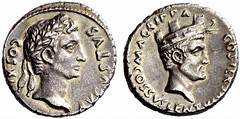 There are quite a few terms of measurement that once were commonly used, but no longer are. Genealogists might come across some of these mysterious words or phrases while looking at old documents that regard the purchase of, or sale of, land. Other terms relate to the money that was paid for property.
There are quite a few terms of measurement that once were commonly used, but no longer are. Genealogists might come across some of these mysterious words or phrases while looking at old documents that regard the purchase of, or sale of, land. Other terms relate to the money that was paid for property.
Do you know what an “arpent” is? There are two definitions for this word that can be found in the ROOTS Genealogical Dictionary.
The first one is “a unit of land measure, sometimes used in parts of French North America, such as Quebec and Louisiana, and in certain British colonies, varying from 0.84 to 1.28 acres, or about five perches.” The second definition is “unit of linear measure equal to approximately 11.5 rods, or about two and a quarter perches”.
What does “perches” mean? It is “a measure of about 50 feet; as an area of measure it was about ¼ acre”. The word “bonnier” is a measurement that is “approximately 10 arpents”. Things have quickly circled back around to where I started.
A “cubit” is “a unit of length equal to approximately 18 inches”. A “dhira” is “1/24 of a cubit”. The word “parasang” was persian, and it meant “a unit of length of 30 stadia, or about three miles”.
The word “sulung” and the word “sulong” both mean the same thing: “a measure of land equal to two hides, in co. Kent, England”. Ok, so how long, exactly, was a “hide”? It turns out that “a hide could vary from 60 to 120 acres depending on the quality of the land”. The name of this type of measurement refers to the “hide” or “shield” that “a man could provide for military service, and so a hide originally was expected to provide one man for military service when called upon”.
This leads to the term “hundred” which was “an administrative unit” that referred to “a hundred hides”.
There are many terms for money that were once well known, but have since stopped being used. “Current money” was a term found in Colonial Virginia records. It is “reference to a differential between Virginia Sterling and the amount of English Sterling it would buy on the London Exchange”.
Perhaps you have heard of a “denarius” before, if you studied Rome when you were a student. A denarius was “a silver penny”. It was abbreviated by the English as “d”. This type of money was “first issued by the Romans during the Punic Wars, replacing the drachma. Originally a denarius was worth 10 asses”.
A “triens” was “1/3 of a solidus”. What was a solidus? It was a “gold coin which was the standard of the Roman monetary system from Constantine c.500 AD, and used as the standard of currency until the 13th Century”.
Image Ancient Art on Flickr

